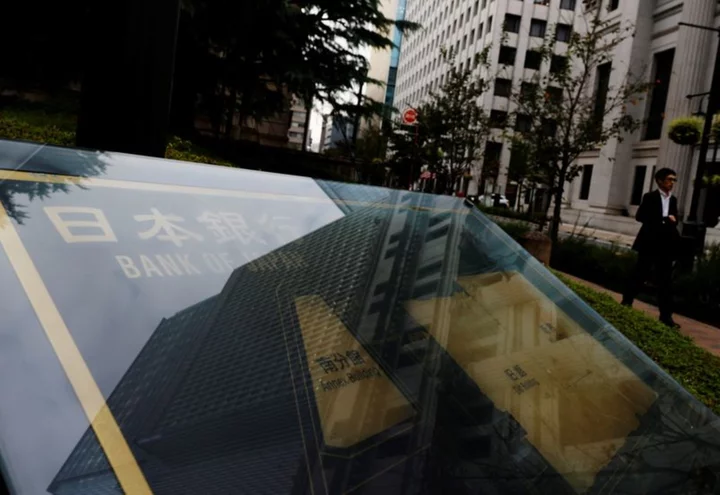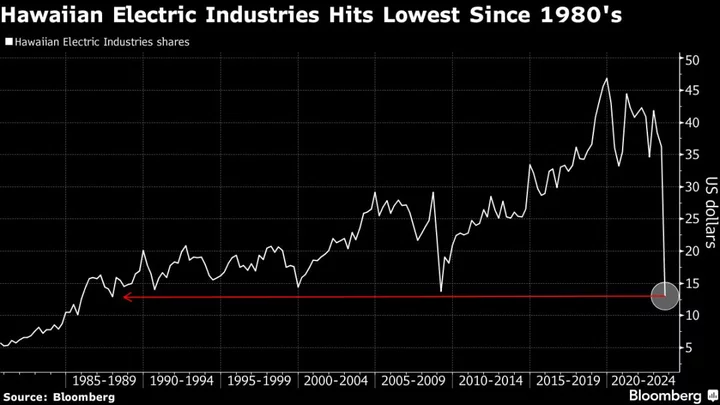By Leika Kihara
TOKYO (Reuters) -The Bank of Japan's massive asset-buying scheme introduced in 2013 led to a sharp deterioration in the function of the country's bond markets, which continued to worsen after the adoption of its yield curve control, a central bank survey of market participants showed on Friday.
The findings highlight the strains that the central bank's prolonged super-loose monetary policy has inflicted on market liquidity in the world's third-largest economy, and comes amid heightening market expectations that the BOJ is starting to consider an exit from ultra-low interest rates.
The special survey, which came on top of a regular quarterly poll on how bond markets were functioning, was conducted as part of a comprehensive review the BOJ is conducting on the impact its 25-year unconventional monetary easing steps on the economy and financial markets.
A diffusion index measuring how market participants viewed bond market functioning worsened sharply to 5 after the BOJ's adoption of quantitative and qualitative easing (QQE) in April 2013, from 62 before its introduction, the survey showed.
The index worsened further to -48 after the introduction of negative interest rates in January 2016, and to -71 after the adoption of yield curve control (YCC), the survey showed.
"I see the biggest problem as the BOJ's ownership of Japanese government bonds (JGBs). It owns about 50% of JGBs, which is too high. The market won't recover unless this ratio falls close to 10%," said Katsutoshi Inadome, senior strategist at Sumitomo Mitsui Trust Asset Management.
Former Governor Haruhiko Kuroda deployed QQE in April 2013, aiming to shock the public out of a deflationary mindset with heavy money printing, and fire up inflation to the bank's 2% target.
After the huge bond buying began drying up market liquidity, the BOJ pushed short-term interest rates to negative territory in January 2016. It then adopted YCC in September 2016, under which it caps the 10-year bond yield around zero.
With inflation exceeding the BOJ's target of 2% for more than a year, many market players expect incumbent Governor Kazuo Ueda to start dismantling his predecessor's massive stimulus programme next year.
Ueda has already begun the process. The BOJ tweaked YCC in July and October to relax its grip on long-term yields, and allow bond moves to be driven more by market forces. It also reduced offer amounts of its bond buying for some maturities twice last month.
The 10-year JGB yield moved in a range of 0.24% to 0.97% so far this year, wider than the 40-basis-point band between 0.08% and 0.48% it hugged in 2022.
With YCC already watered down, many market players expect the BOJ to end negative interest rates either in January or April next year. The central bank next meets for a rate review on Dec. 18-19.
Upon becoming governor in April, Ueda announced his plan to conduct the comprehensive review to examine the pros and cons of the BOJ's various unconventional monetary easing measures.
As part of the review, the BOJ will conduct a workshop gathering academics to discuss the topic on Monday.
"The review itself may not affect the timing of an exit. But it will offer the theoretical background for the broad direction under Ueda's governorship, which is to shift away from the current ultra-loose policy setting," said Izuru Kato, chief economist at Totan Research and a veteran BOJ watcher.
(Reporting by Leika Kihara; Editing by Jacqueline Wong and Kim Coghill)









